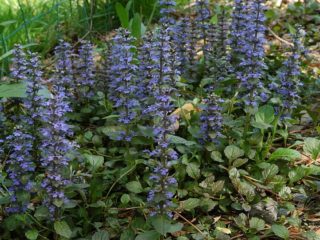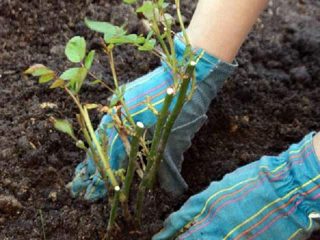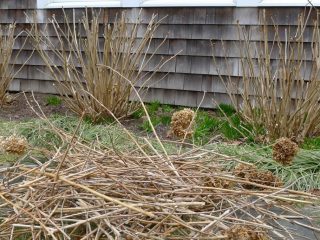Content
Creeping tenacious in landscape design has earned special love for its amazing covering properties - there will be no room left for weeds and other plants in the designated area. In the common people, it has a large number of “talking” names: bitter, oak, unfading and undying. They perfectly characterize her endurance and vitality.

With the help of tenacious, they create beautiful compositions, and also fill rockeries and mixborders
Numerous species of creeping tenacious inhabit the temperate latitudes of the Northern Hemisphere, as well as Africa and even Australia. Its varieties differ from each other not only in the color of the flowers, but also in the leaves themselves.
It is essentially a herbaceous perennial that averages 8-35 cm in height, which explains its good covering properties.At the same time, ayuga peduncles rise above the foliage to a height of 15 cm, so their bright blue color is noticeable from afar.
Medicinal properties of the herb Creeping tenacious
The chemical composition of the leaves and shoots of creeping tenacious includes numerous elements:
- tannins;
- ascorbic acid;
- flavonoids;
- vitamin K;
- steroids;
- essential oil.
Therefore, ayuga is known not only for its decorative properties, but it is also actively used in folk medicine. The plant has the following actions:
- expectorant;
- antiseptic;
- wound healing and astringent;
- diuretic;
- hemostatic;
- diuretic;
- diaphoretic;
- anti-inflammatory.
Most often, with the help of creeping tenacious, inflammatory diseases of the female genital organs, breathing, including pulmonary tuberculosis, rheumatism, and pathological processes in the nasopharynx are treated. Ayuga juice, which has an antimicrobial effect, is used to restore skin after burns.
As with any medicinal plants, when using creeping tenacious, there are a number of contraindications. It should not be used if you are prone to constipation. In addition, the plant has a very strong choleretic effect. In these cases, the dosage must be carefully observed and the herb used with caution.
Most often, creeping tenacious is used in the form of infusions, which are prepared differently for each disease. In addition, tea is made from the herb to reduce body temperature, added to salads, and crushed leaves are used to treat various wounds and cuts. In cosmetology, tenacity has also found its sphere: using an infusion based on it helps stimulate hair growth.
Reproduction of Perennial Tenacious
Perennial ayuga is propagated using seeds or vegetatively. In this case, a lot depends on the purpose of planting - if it is a decorative decoration of the garden, then it is recommended to resort to dividing the tenacious plants with rosettes. This method is the most popular and simple.
Growing Tenacious from seeds
Seeds for sowing ayuga can be purchased at a specialized store, or collected from flowers yourself. The first option is most preferable for survivors.

It is not recommended to store seeds collected independently for a long time, since they quickly lose varietal characteristics - leaves and inflorescences may differ in color from the original
There are 2 options for planting a plant:
- in spring – sowing can begin in mid-April, when the soil warms up a little.
- in autumn – sowing is done before the snow. Then, with the onset of warmth, the first shoots will already appear, and the creeping tenacious itself will bloom earlier. In addition, it will be even more hardy than spring seedlings.
In any planting option, there is no need to pre-sow the seeds in boxes - this is done immediately in open ground. Fertilizers are applied to the selected area - superphosphate, or mineral and organic. Several tenacious seeds are placed in the recesses, which are covered with a small amount of earth on top and watered.
With a large planting area of the creeping tenacious plant, another propagation option is possible - self-seeding. But it is not suitable for landscape design, since plants grown in this way will become of a different variety, which means they will differ significantly from the original appearance. In this case, you need to monitor the fading flower stalks in order to cut them off in time.
Bush sockets
The vegetative method involves reproduction by division.To do this, an adult plant must be divided into rosettes at least once a year. The procedure is carried out in September or early spring. In this case, only the overgrown creeping tenacious is used. A necessary condition is that the socket must have a spine.
In spring, rosettes can be planted in mid-May. Even if there is slight frost, the sprouts will not die - they can withstand short frosts down to -9 ° C. The distance between seedlings of creeping tenacious should be at least 30 cm, as they grow quickly. Necessary conditions include regular watering until rooting. In this case, the green part is strictly left above the surface of the earth, and watered carefully, using a watering can so as not to expose the roots.
Planting and caring for Creeping Tenacious in the open ground
Ajuga does not require any special care, which is why gardeners value it. Minimal maintenance allows you to create a beautiful grassy carpet on your site in a short time.

During flowering from May to June, the tenacious plant covers the planted area with a continuous carpet of blue and light blue flowers.
Ayuga planting dates
If necessary and desired, ajuga can be planted and replanted all summer long: from April to mid-September. But by planting tenacious in the fall, you can get green cover in the very early spring.
Requirements for place and soil
There are also no special requirements for soil or planting site. Partial shade is ideal for it, so under the canopy of trees, around bushes or roses, ayuga will feel great. The scorching sun will also not kill the creeping insect, so it is also planted along paths.
The soil can be anything, but there is a slight difference in care. The ideal would be a loamy area rich in humus - it can provide the necessary moisture. Ayuga also grows well in sandy soils, but watering must be more frequent to maintain its healthy appearance.
Planting and watering
The unpretentious ayuga is planted almost everywhere. Moreover, the tenacious plant can grow quite well for several years in the same flower bed. The only condition is that once every 5 years you will need to feed it with nitrogen.
It does not need regular and constant watering - it will survive even during dry periods. But to preserve decorative properties, you still have to do this sometimes. Particular attention is paid to moisture during the period of sowing or planting tenacious seedlings.
Feeding
In nature, creeping tenacious is able to survive on the poorest soils, but for ornamental varieties it is recommended to use fertilizing - this helps to maintain a healthy and blooming appearance of the grass in the garden. Peat oxidate or any other universal complex fertilizer is quite suitable for this. It is enough to use it once a month.
Preparing for winter
Ayuga can withstand even very harsh winters, but only if there is shelter. During the snowy period, no preparatory measures are carried out. But if frosts are already setting in, but there is still no snow, you need to take care of the creeping tenacious. To do this, use any breathable covering material - sawdust, fallen leaves, spruce branches.
Collection and storage of grass
For medicinal purposes, flowers, leaves and stems of creeping tenacious are used. They must be prepared during the flowering period: May-June.The raw materials are thoroughly dried - it should have a light, pleasant aroma, but an astringent bitter taste. You can store the workpiece for a whole year in a dry place, using paper or canvas bags.
Diseases and pests
The decorative creeping tenacious plant practically does not get sick and is immune to pests. There are just a few problems that gardeners may encounter:
- fungal diseases - occur extremely rarely, most often in abandoned gardens or wild nature;
- snails and slugs are able to take a liking to the area during the rainy season; to protect against them, lime or salt is sprinkled around the ayuga.
Creeping tenacious in garden landscape design
The name of the survivor speaks for itself - if you don’t keep an eye on it, it will “spread” throughout the entire area. And despite the decorative variety, it will look more like an annoying weed. To do this, you just need to pick off the fading inflorescences in time.
What to plant with Creeping Tenacious

She feels great next to trees and bushes, as she is not afraid of the shadow
In this regard, creeping tenacious is often planted next to roses, coniferous trees and shrubs, instead of a lawn on the darkened side. A great idea would be to add ayuga to the banks of an artificial pond.
But, given that the tenacious plant can survive even weeds from its site, there is no need to plant “tender” plants next to it. In the neighborhood, as mentioned above, roses, ferns, geraniums, hostas, as well as some types of carnations will feel great.
Conclusion
Creeping tenacious in landscape design is one of the few perennial plants, the care of which is reduced to almost zero. The absence of diseases and high vitality make it an indispensable element of the garden plot, especially in our climate.
A video review about the tenacious plant helps many people decide on planting a plant on their site.








